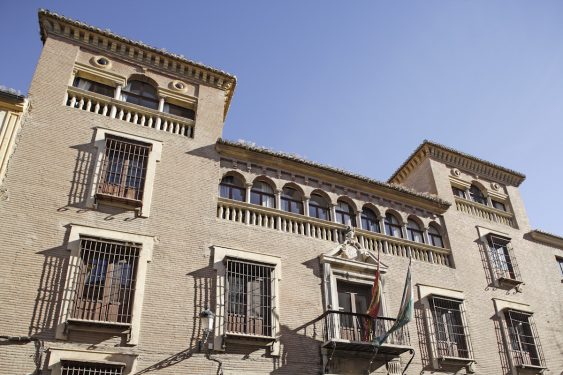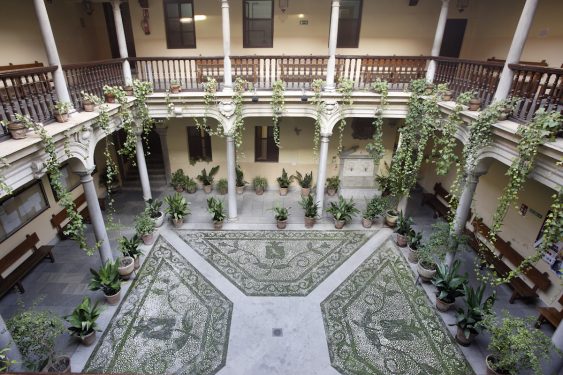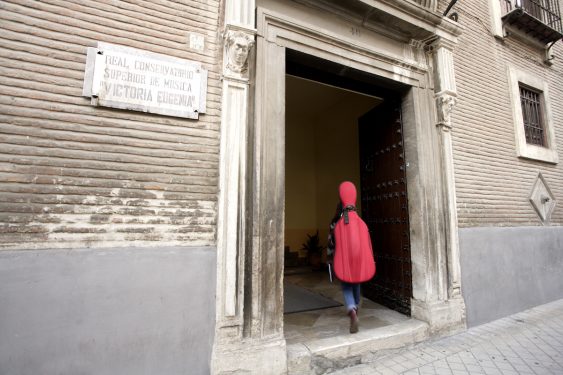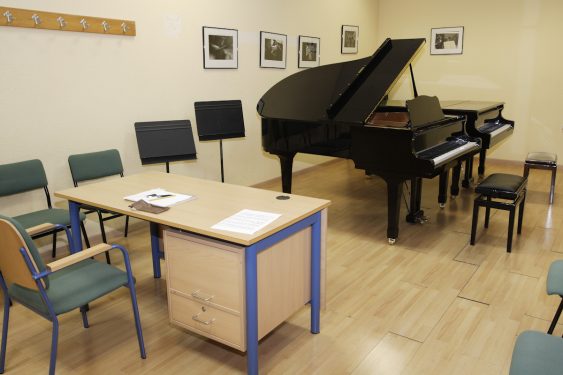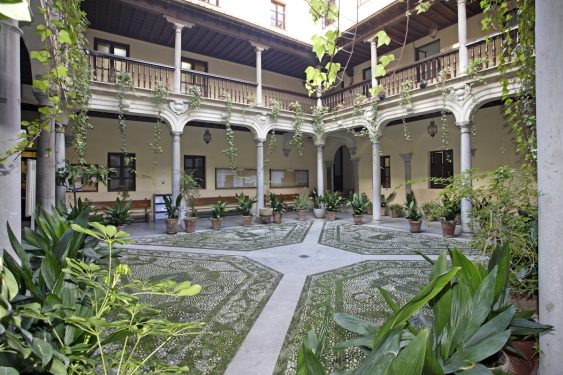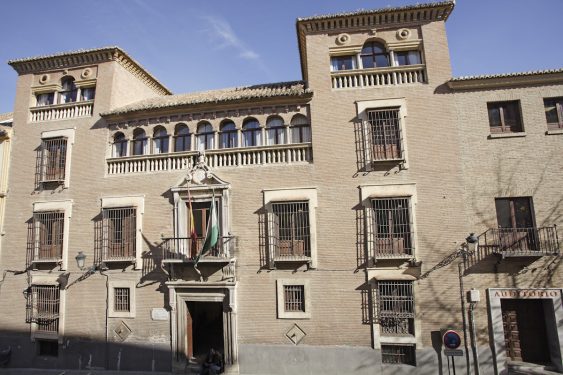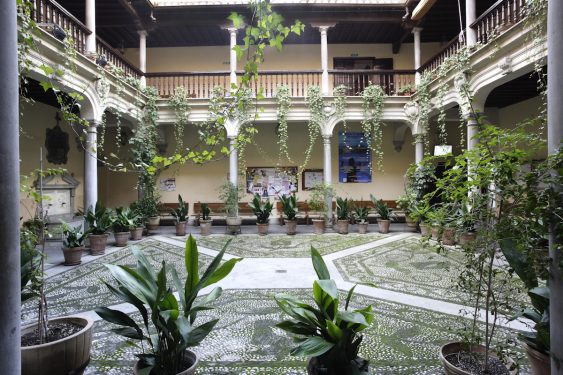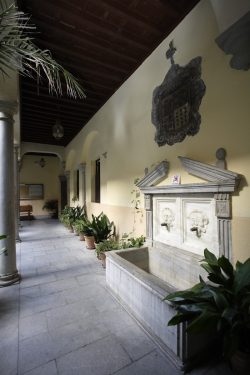Provisional site of the General and Technical College where Federico García Lorca went to high school. The palace is today the Victoria Eugenia Conservatory of Music of Granada.
Federico García Lorca went to high school, the first year as a free student and the rest as an official student, at the Instituto General Técnico (General and Technical College) of Granada, then located in the Palace of the Marquises of Caicedo (San Jerónimo, 46), current home of the Royal Conservatory of Music Victoria Eugenia.
The teenager alternated during high school between two schools: in the morning he attended the General Institute and in the afternoon, as reinforcement, the Sagrado Corazón, a private secular school run by a relative of his mother, Joaquín Alemán, who acted as his tutor. There, at school, he coincided with his brother Francisco, four years younger.
Joaquín Alemán, as Lorca’s tutor, signed his application for admission in the 1909-10 academic year. Although the school was officially coeducational, among the more than 400 students there was only one girl.
The first site of the institute after its creation by the Pidal Law in 1845, was the Colegio Mayor San Bartolomé y Santiago, but it soon became clear that it was not the right space. In 1875, it was moved to the building across the street, today the conservatory of music, where it remained until January 1918 when, after numerous delays, the new building of Gran Vía, 61, the current Padre Suárez College opened.
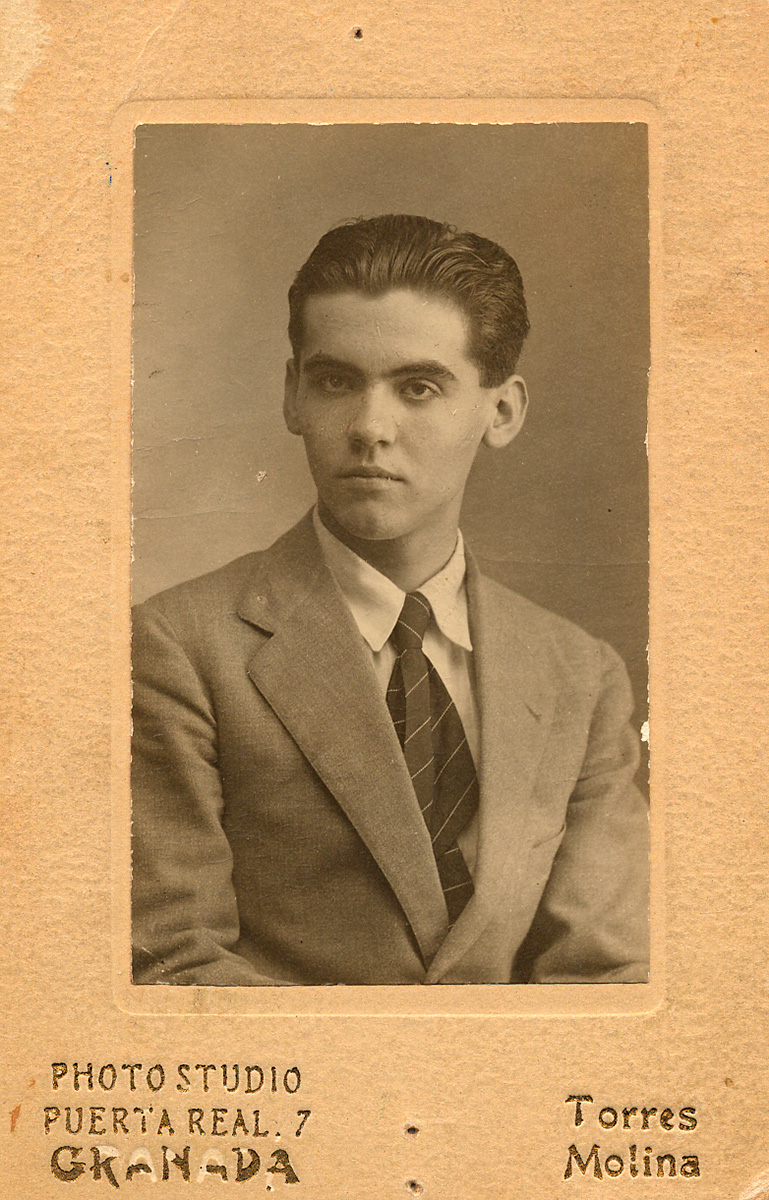
The General Technical Institute was Federico García Lorca’s second experience as a high school student after his fleeting stay in Almería where, in September 1908, he passed the entrance exam that would also help him to enroll in the following course in Granada. During his stay in Almería he was in the care of his former teacher in Fuente Vaqueros, Antonio Rodríguez Espinosa. The relatives of the future poet decided to interrupt his stay in Almería because of some fever attacks and a phlegmon that disfigured his face.
Joaquín Alemán, as Lorca’s tutor, was the one who signed his application for admission as a free second-year student at the Institute in the 1909-10 academic year. Although the school was officially coeducational, among the more than 400 students enrolled that year, there was only one girl, Magdalena Cazorla Insúa, from Motril.. The first subjects he took were Notions of Arithmetic and Geometry, Calligraphy and Latin.
When in 1918 the institute finally moved to its final location, Federico had already completed his education and was preparing to enter the University and travel to Madrid.
Course by course Federico García Lorca’s baccalaureate was as follows:
- 1908-1909 General and Technical College of Almería. First year and entrance exam.
- 1909-1910 Second course. General and Technical College of Granada as a free student. Subjects: Notions of Arithmetic and Geometry, Calligraphy and Latin.
- 1910-1911 Third year as an official student at the General and Technical College of Granada. Subjects: Latin Language, History of Spain, French Language and Gymnastics.
- 1911-1912 Fourth year as an official student at the General and Technical College of Granada. Subjects: French, Drawing, Preceptive and Universal History.
- 1912-1913 Fifth official course in Granada. Subjects: Psychology and Logic, Literature, Physics, Drawing and Physiology and Hygiene.
- 1913-1914 Sixth and final year of his Bachelor’s Degree in Granada. Subject: Ethics and Rudiments of Law, Natural History, Agriculture and Agricultural Technique, Inspirations and Chemistry.
Calligraphy was the subject with which the then teenage musician found the most difficult. According to his brother Francisco, Federico had to fight hard to save this compulsory first-year subject. “Federico, as already recalled, was failed six times in the final exam. It was said that more than six failures in a compulsory subject meant that a student could no longer continue studying. I don’t know if that was true, but it is the case that a friendly approach with the professor allowed Federico to overcome the obstacle,” his brother recalls.
However, the academic record kept at the Padre Suárez College puts things in their place and reduces the failure to four; in the first three Federico is listed as a no-show. His difficulties in writing with a handwriting appropriate to the calligraphic requirements of the time is evident in the originals of his exams that are preserved in the Padre Suárez College.
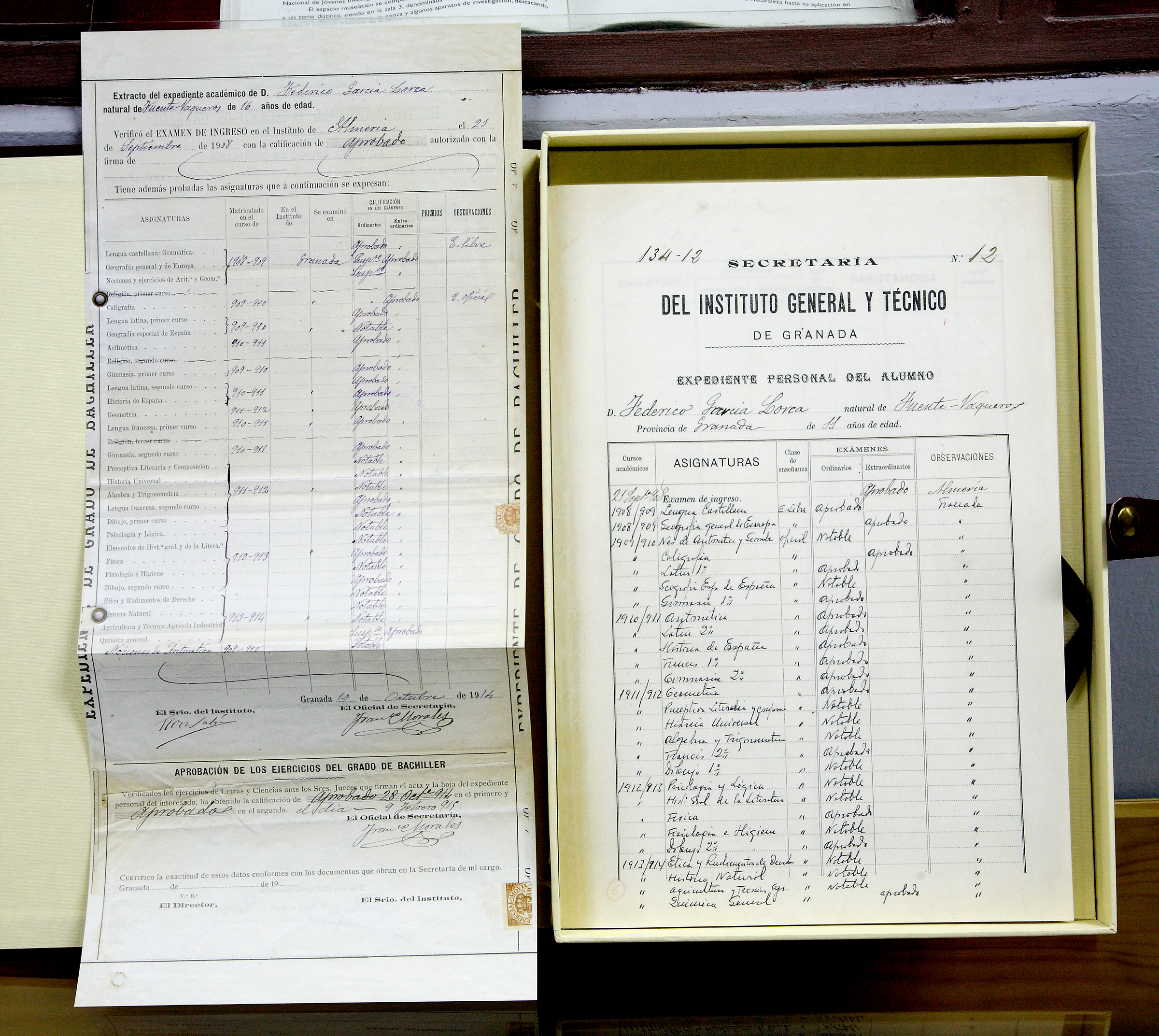
He was not a lucky student in chemistry either. Federico himself was responsible for repeating over the years to his friends one of his funniest stories of absent-mindedness. The chemistry teacher ordered him to write on the blackboard a formula that was equivalent to “b minus h, plus b minus one”. “But Don Juan,” writes Francisco, “pronounced the B as P, and Federico, who surely had never looked at the text in his life, heard strange sounds that meant nothing: Pesupache plus pesupuno.” And no doubt overwhelmed, he wrote them literally.
The fourth year, 1911-1912, was marked by a new illness. If in Almería his classes were interrupted, and ultimately his stay, by fevers and a phlegmon that disfigured his face, in the fourth year he caught typhus, an endemic disease in Granada at the beginning of the century (the first vaccine was developed between the two world wars). As compensation, his father gave him a watch that eventually went to his brother Francisco, as Federico had a rare aversion to watches. In the Book of Poems he writes: “Os comprendo y me dejo [“I understand you and I leave] / arrumbado en la cómoda [Lying on the dresser] / al insecto del tiempo. [My insect of time.] / Sus metálicas gotas [Its metallic drops] / no se oirán en la calma [will not be heard in the calm] / de mi alcoba […] [of my bedroom (…)] (¡Oh poeta infantil, /quiebra tu reloj!)” [(O childish poet, /break your watch!).”]
(Maybe it was because you hadn’t mastered your Geometry)
El jovencito se olvidaba.
[The lad was going blank.]
Eran las diez de la mañana.
[It was ten in the morning.]
Su corazón se iba llenando
[His heart was growing full]
de alas rotas y flores de trapo.
[of broken wings and rag flowers.]
Notó que ya no le quedaba
[He noticed there remained]
en la boca más que una palabra.
[just one word on his lips.]
Y al quitarse los guantes, caía,
[And when he took off his gloves]
de sus manos, suave ceniza.
[a soft ash fell from his hands.]
Por el balcón se veía una torre.
[A tower showed through the balcony door.]
El se sintió balcón y torre.
[He felt he was both balcony and tower.]
Vio, sin duda, cómo le miraba
[No doubt he saw how the clock,]
el reloj detenido en su caja.
[stopped in its case, surveyed him.]
Vio su sombra tendida y quieta
[He saw his shadow quiet and prone]
en el blanco diván de seda.
[on the white silk divan.]
Y el joven rígido, geométrico,
[And the stiff, geometrical youth]
con un hacha rompió el espejo.
[smashed the mirror with a hatchet.]
Al romperlo, un gran chorro de sombra
[When it broke, a great burst of shadow]
inundó la quimérica alcoba.
[flooded the illusory room.]
- Jacinto S. Martín. García Lorca Bachelor. Alhulia. Granada, 1998.
- Andalusian Educational Heritage Route. I. E , Padre Suárez.
- Academic Records of Illustrious Students. Instituto Padre Suárez. Non venal facsimile edition. Granada, 2007.
- Francisco García Lorca. Federico and his World. Alianza Tres. Madrid, 1990.
- Lorca´s location
- General and Technical Institute
- current location
- Royal Conservatory of Music Victoria Eugenia
- ADDRESS
- San Jerónimo, 46
- Web
- http://www.conservatoriosuperiorgranada.com/
- Telephone
- 958 893 180
- 18009781.edu@juntadeandalucia.es
- DETAILS OF THE VISIT
Open during the academic year during school hours. Access to the interior patio is free.
